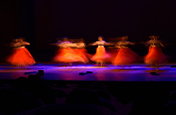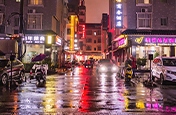Learn to capture motion with panning photography.
Panning photography freezes objects in motion in a still frame. Explore ways to pan your camera, what shutter speed to use, and other ways to add action to your shots.
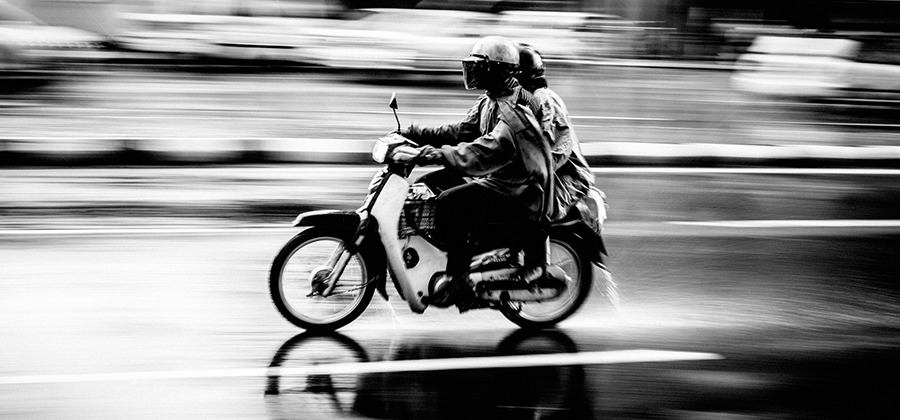
How to capture a moving subject on blurred background.
Motion can be incredibly difficult to capture on camera, but when panning photography — tracking your camera horizontally while shooting a moving subject — is executed successfully, it adds dynamism to a photograph. Panning photography suggests to the viewer that a car is racing down a track, a horse is galloping toward the finish line, or a runner is giving it their all as they sprint through the last leg of a race.
“You want your subject in focus and the rest of the scene blurred to convey the motion of the subject,” says photographer and author Jeff Carlson, who adds that panning always entails a choice on the part of the photographer. You have to decide what’s in focus, what isn’t, and where the viewer’s attention will fall.
Tell a story with a sense of movement.
Photographers have been trying to capture motion since the early days of cameras, but most efforts involved freezing motion and showing a moment too brief for the human eye to discern. “The merits of freezing motion actually go back to the very beginning of the history of photography,” says photographer and instructor Ben Long. “There are those famous photos that Eadweard Muybridge took of a horse running for Leland Stanford. The story goes, this was to settle a bet.” Muybridge wanted to find out if all four of a horse’s feet ever left the ground simultaneously during a gallop. The camera showed that they do.
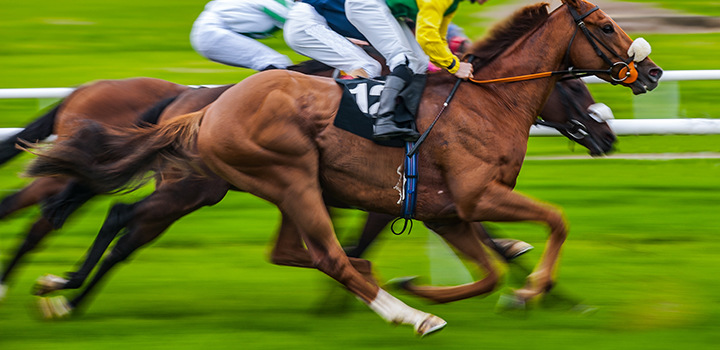
Motion as the human eye sees it often isn’t clear. It doesn’t look like a series of neat, clean images of a running horse. Motion flickers, blurs, and evades sharp definition. If a photographer wants to show motion the way the human eye sees it, they have to do something other than freezing it in time.
Other visual media have found ways to depict motion in still frames. Comic books, for instance, have a long tradition of drawing motion lines around or behind a character that’s moving especially fast. We believe that Superman can fly not just because he’s in the sky, but also because of the sharp lines drawn behind him that show us he’s faster than a speeding bullet.
Panning photography is one way for photographers to capture motion’s blurring effect. “The point of panning photography is to convey emotion,” says Long, who emphasizes that panning needs to suggest story and narrative. To that end, many panning shots look like something out of a comic book: a single in-focus subject grabs the visual attention, while the world around them devolves into a series of motion lines.

“It’s really beautiful when you can tell that story in conversation with other images that you’re shooting,” says editorial photographer Grace Rivera. “If you’re shooting an editorial of a couple driving down the California coast on a motorcycle, you’d have a mix of portraits and still images. Being able to utilize panning photography to show movement and fluidity as you tell the story of two lovers driving down the coast adds to that.”
At its best, panning can make the viewer feel like they’re seeing something exciting. It can be particularly well suited to sports like basketball, where photographers can set up their cameras beforehand to capture the energetic blur of on-court action.
Moving the camera to capture moving objects.
Panning doesn’t just show movement; it’s a type of photography that incorporates movement. “Panning, as the name would suggest, is side-to-side motion,” says Carlson. He notes that the lateral movement and placement of the camera is directly responsible for the blurry, motion-heavy effect associated with panning. And it generally has to be lateral. Up-and-down movement or direct forward motion is not going to give the same blurred-motion impression.

Image by Julieanne Most
“If somebody is coming towards you, you’re not going to get that effect because of the angle,” he says. “You want to set it up so that subject will pass you. Or, if you’re moving at the same speed as the subject, that will also work, but it’s harder to set up.”
Stability is a major asset for panning photography. A tripod will allow you to move the camera left and right smoothly and easily, giving you only the lateral motion you want and none of the vertical motion you don’t. It’s possible to do panning while just holding a camera, but that takes practice and specific equipment. When you’re starting out, go with the tripod.
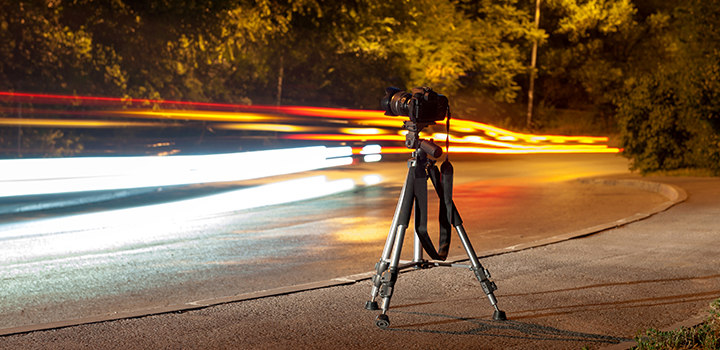
Panning photographers should make sure to equip themselves with suitable lenses. “It can take a while to develop the skill to be able to get something in frame with a long lens and follow it,” Long says. “But there are tools that can help you do this. If you're using a zoom lens, start wider. If the lens is stabilized and has optical mechanisms inside it that are designed to reduce shake and vibration, that can help when working with long lenses. And some lenses have stabilizers that are meant to work only on panning.”
Using panning shots for successful action photography.
Cameras are generally engineered and programmed with still photography — rather than action photography — in mind. To get that specific look of dynamism, a photographer has to “trick” their equipment.
“You’re going to end up fighting your camera,” Carlson says of the panning technique. “Your camera wants to shoot everything in focus and in perfect light. That’s what it’s been designed to do. You have to take steps to override that.”
A good panning shot needs a slow shutter speed — about 1/30 to 1/80 of a second. While that’s not a lot of time in human terms, it makes a great difference for the equipment. This exposes the sensor to light longer. It also gives a moving camera time to capture motion.
“Having the shutter open longer is key to getting a nice motion blur.”
For a good panning shot, the camera should match speed with the subject and move as they do. Having the shutter open longer is key to getting a nice motion blur. Carlson also recommends using autofocus. Subjects, especially in sports, often move erratically or unpredictably. Using autofocus allows a photographer to catch subjects as they go by and, ideally, the subjects will be sharply defined against what looks to be a moving background.
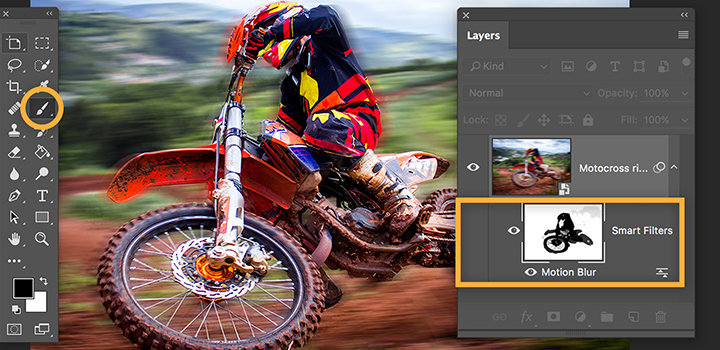
If you’re not quite capturing the blur you want in the camera, note that you can add blur in post to help push the action and focus of a photo.
How to hone your eye for moving subjects.
Panning photography is hard to pull off, both technically and artistically. “Be prepared to have a lot of shots where nothing is in focus,” says Carlson. Rivera recommends that photographers who want to get into panning start with something simple.
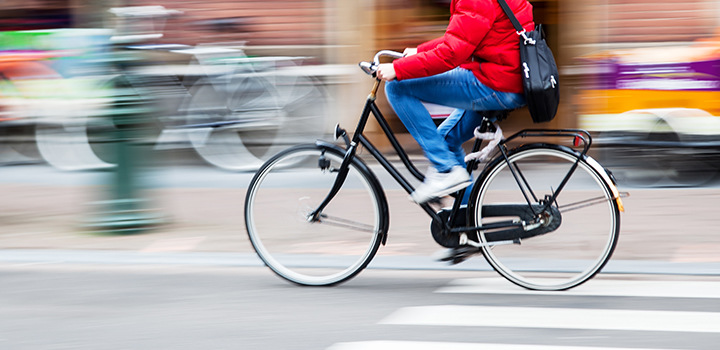
“A good way to practice it is using a cyclist,” she says. “Have a friend get on a bike, and post yourself across the street so you can practice a few different ways to do it.” Rivera says that, eventually, aspiring panning photographers will be able to pull off more advanced techniques like shooting a motorcyclist from the back of a pickup truck, with the two vehicles matching speed.
Rivera also notes that panning can sometimes look gimmicky or inauthentic. “There’s a very fine balance between cheesy and really well done,” she says. If successful, though, panning photography captures dynamic motion that brings narrative and excitement to your photos.
Contributors
You might also be interested in…
Discover how adjusting shutter speed can help you capture clean shots or motion-filled moments.
Discover ways to select the ideal focal length for any and every photo.
How to add bokeh backgrounds to your photographs.
Learn more about the beautiful blur effect that can give your photos a striking look.
Night Photography.
Low light doesn’t have to equal low quality with these tips for successful nighttime photos.
Get Photoshop Lightroom.
Edit, organize, store, and share photos from anywhere.
7 days free, then US$ 9,99/mo.
